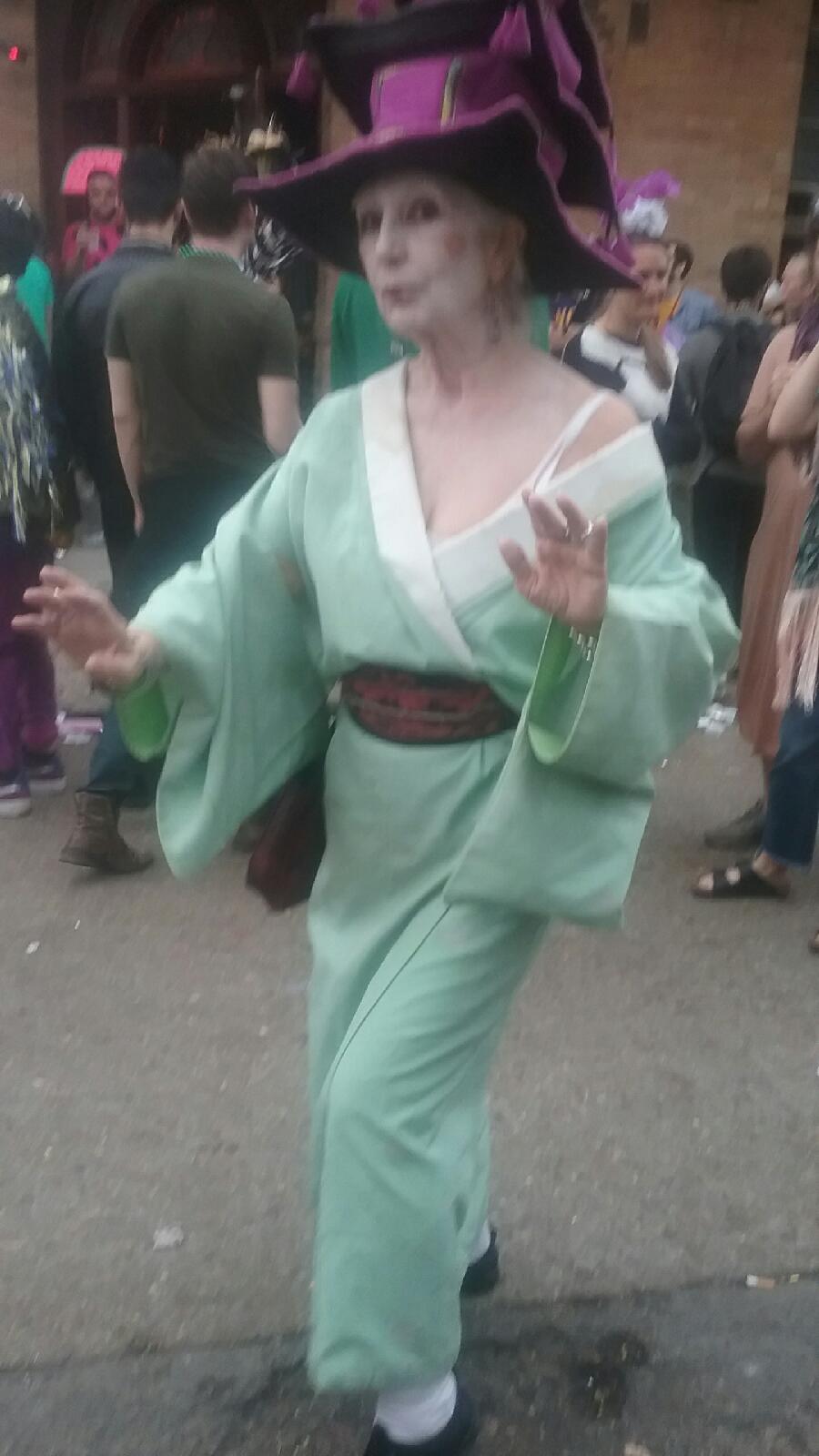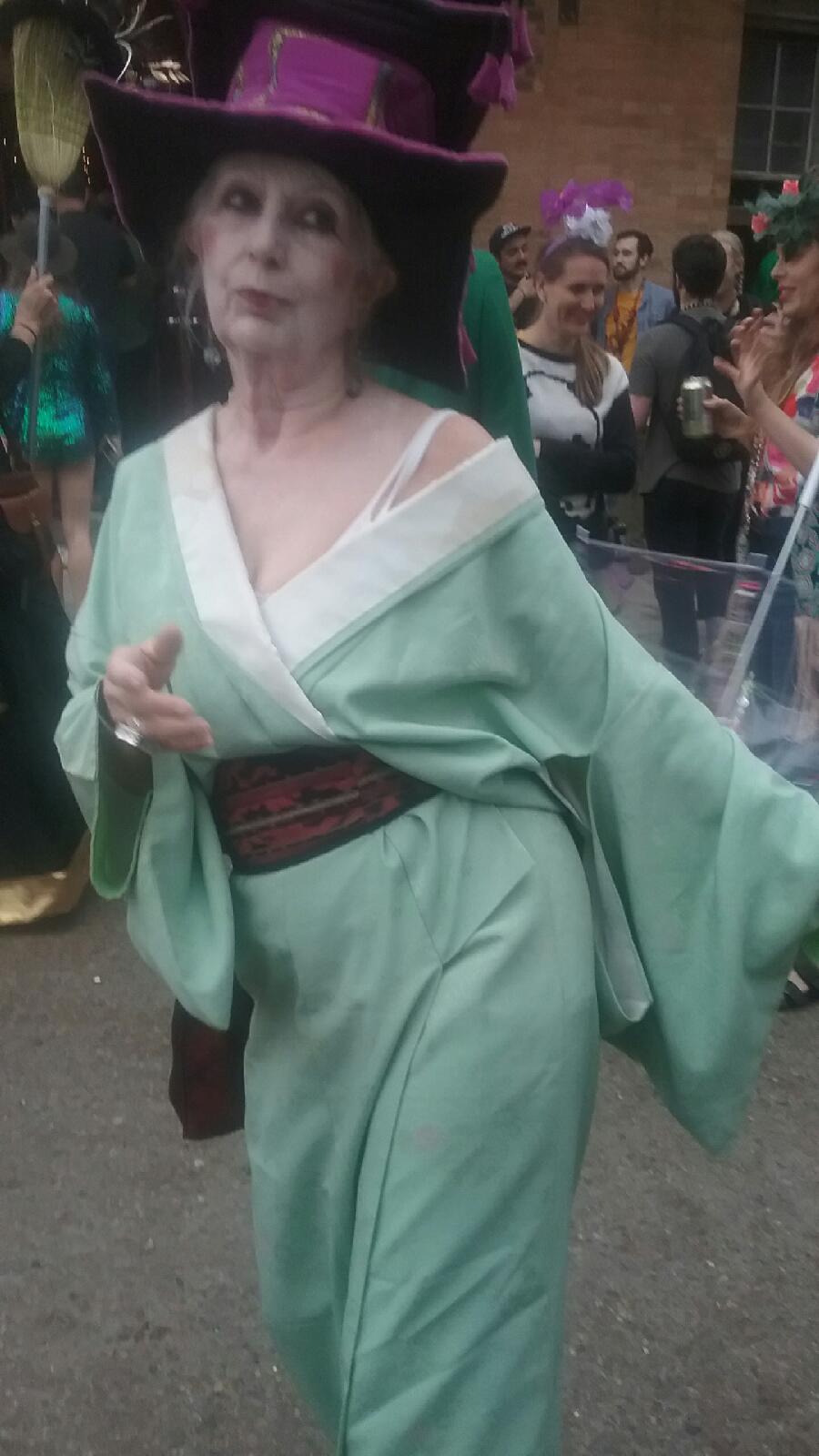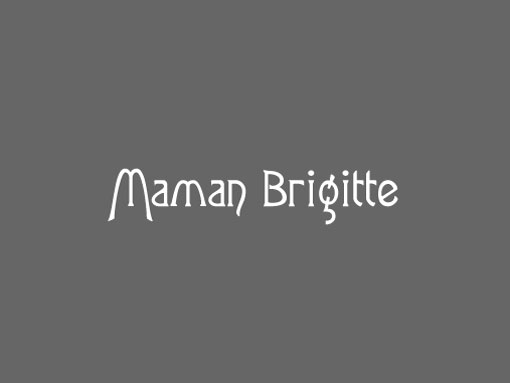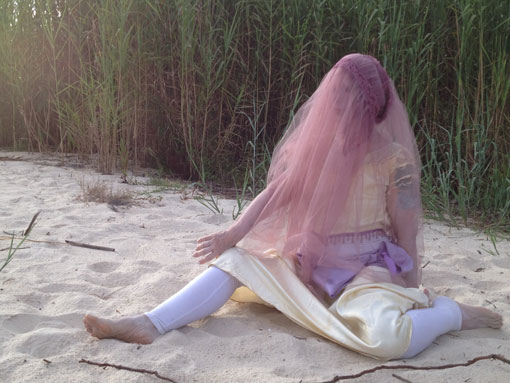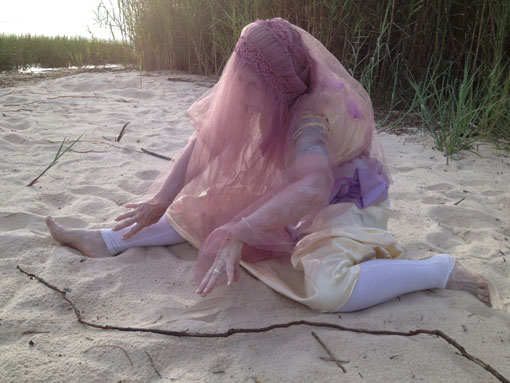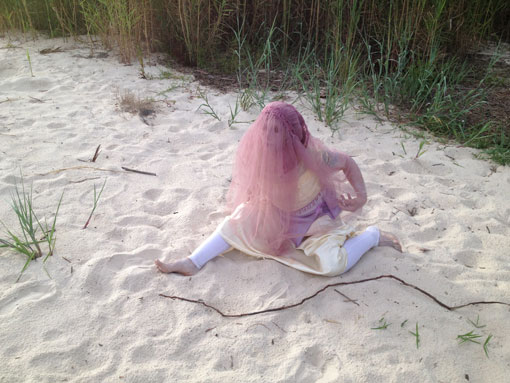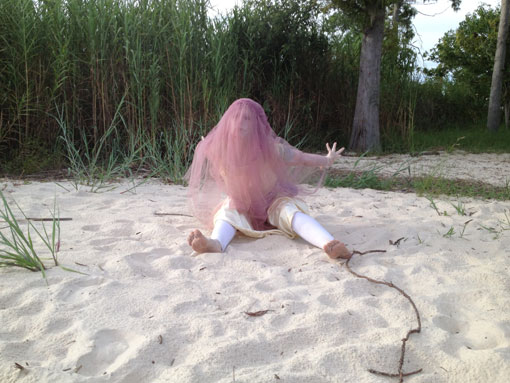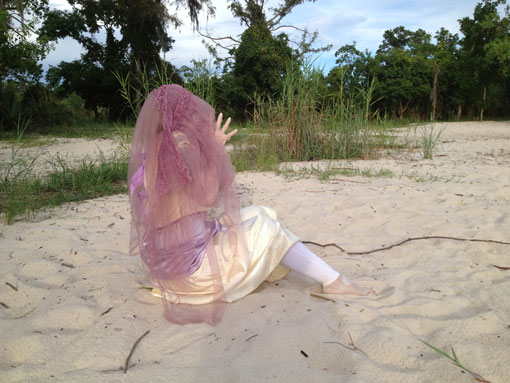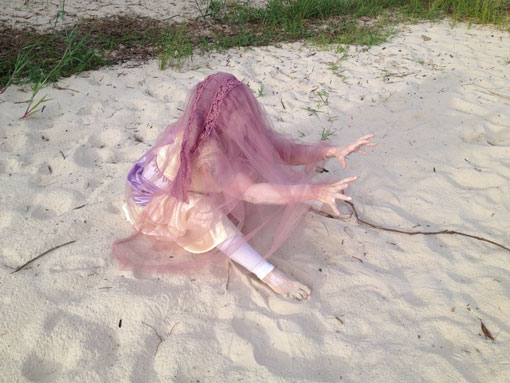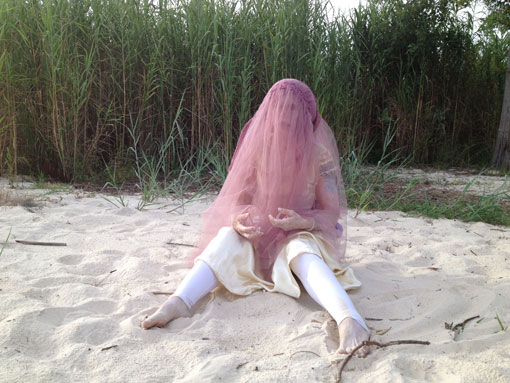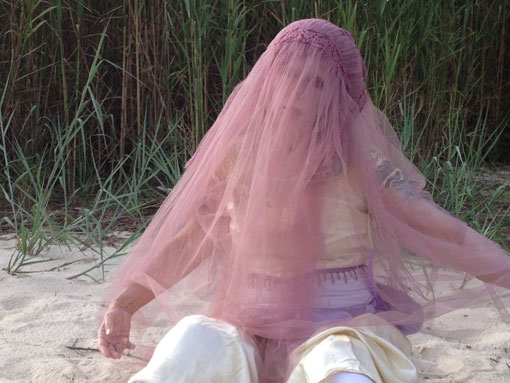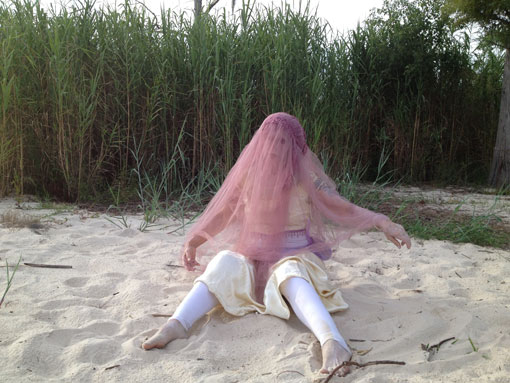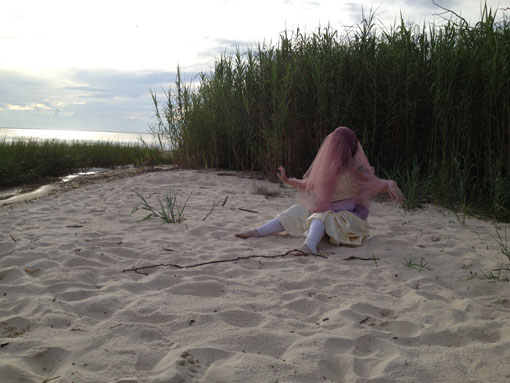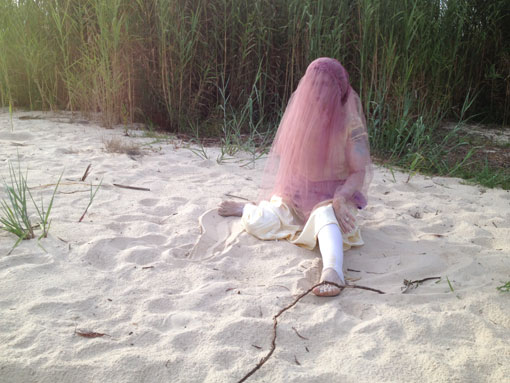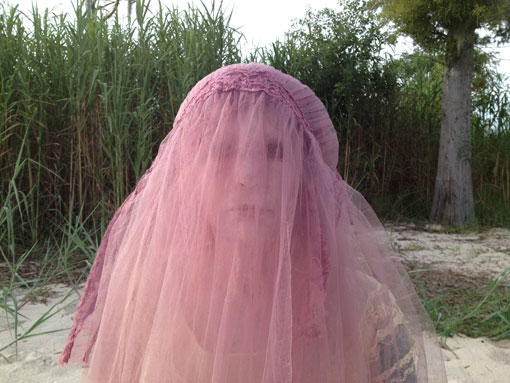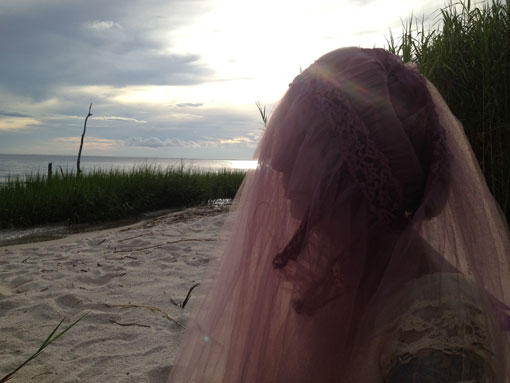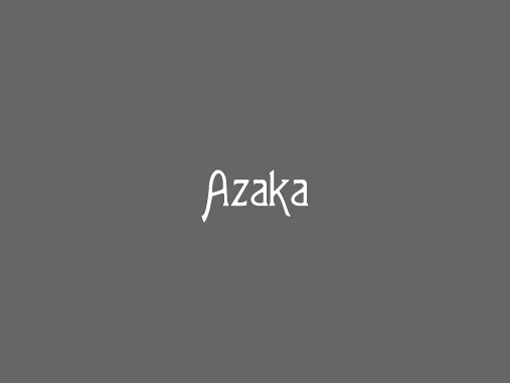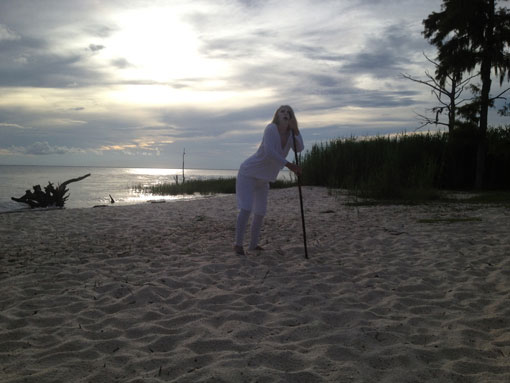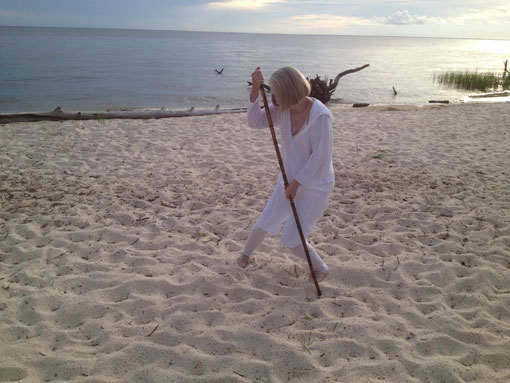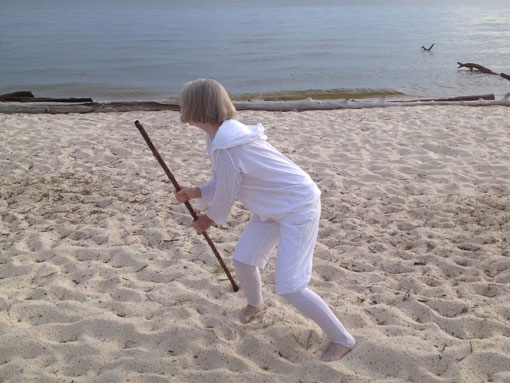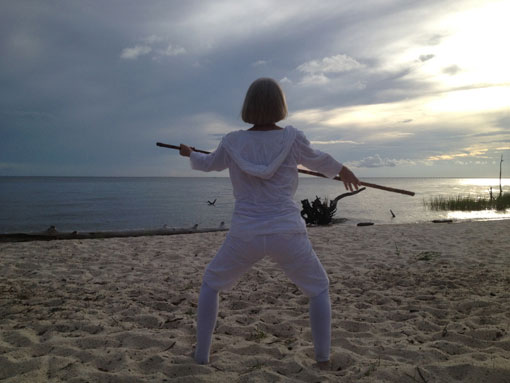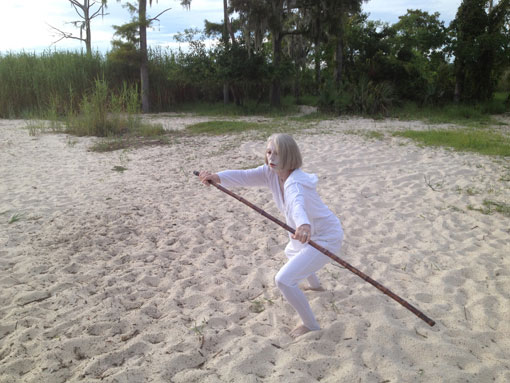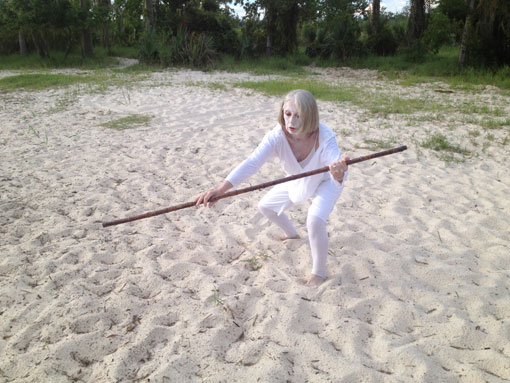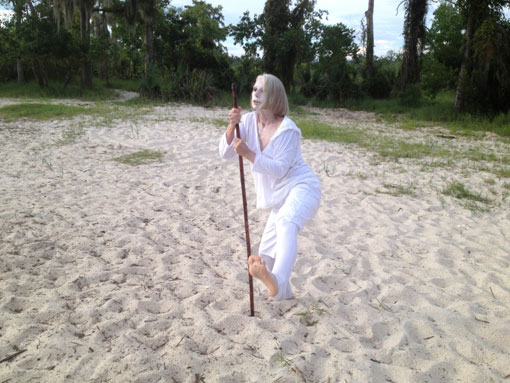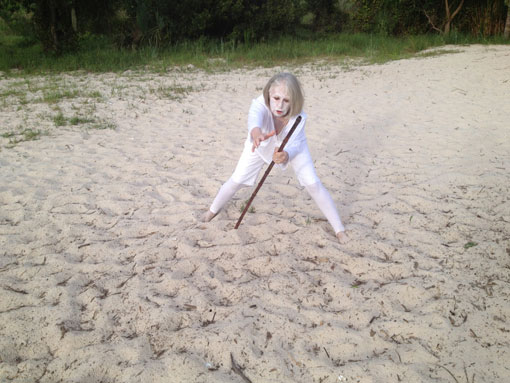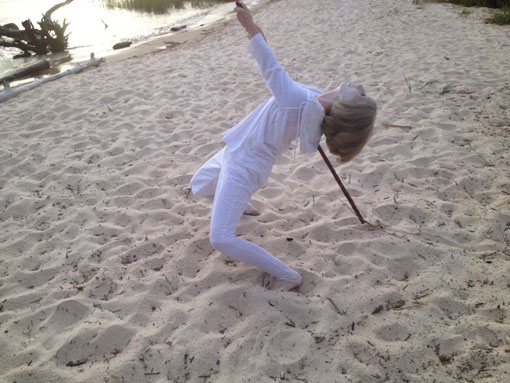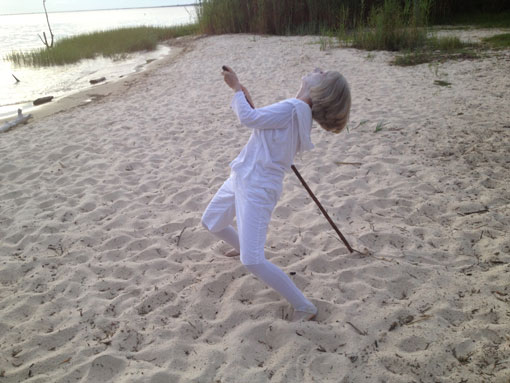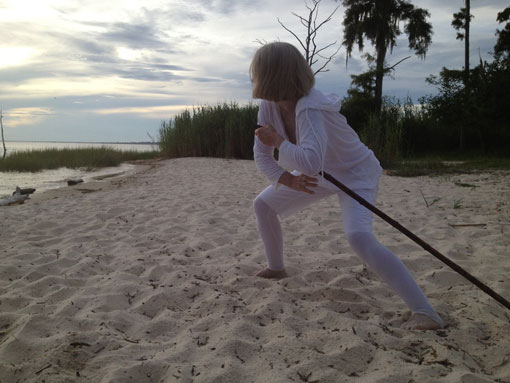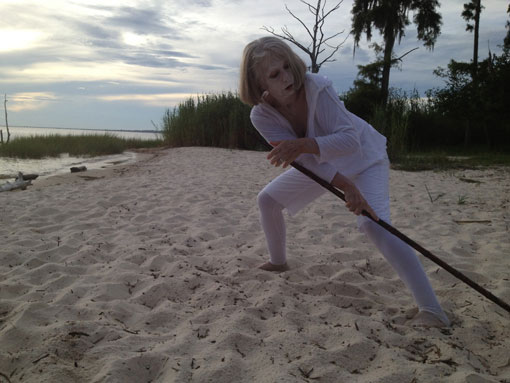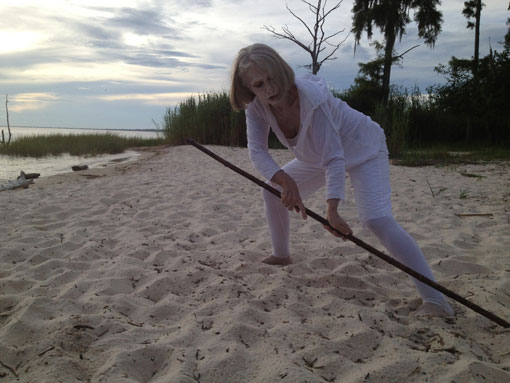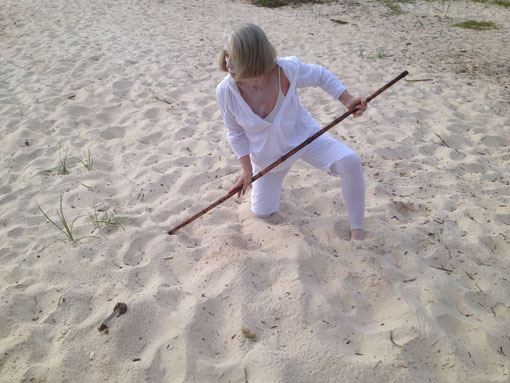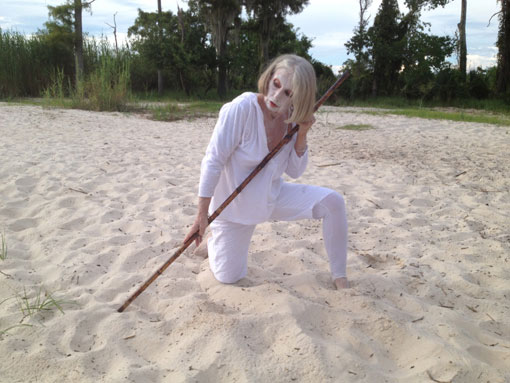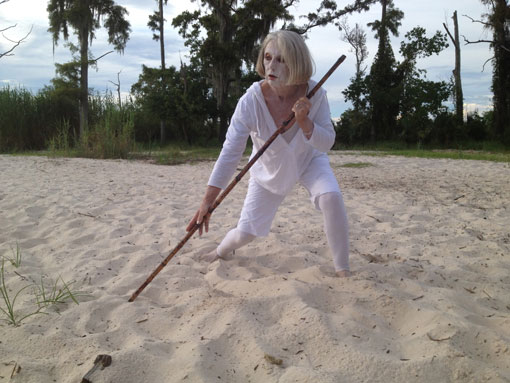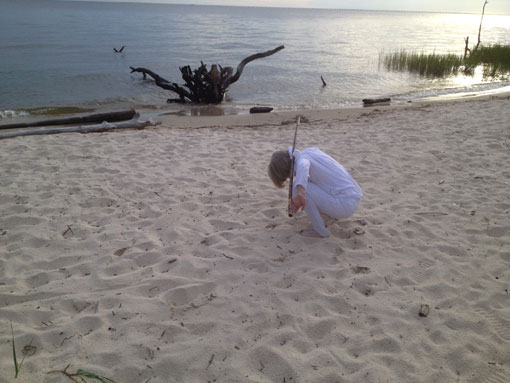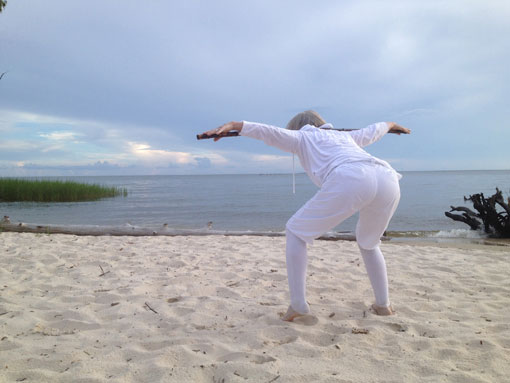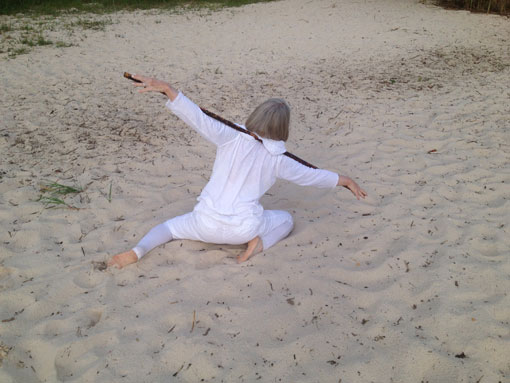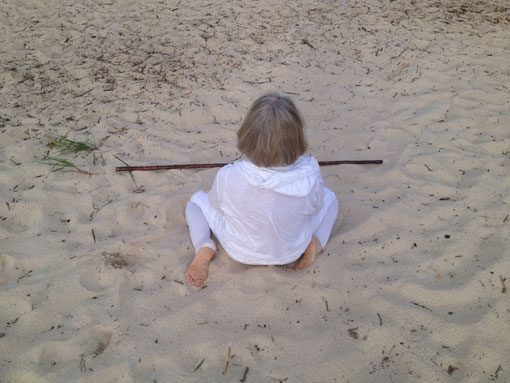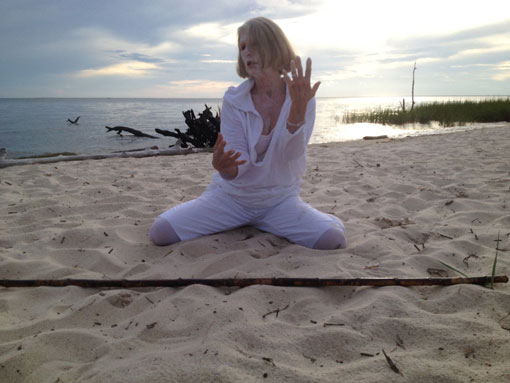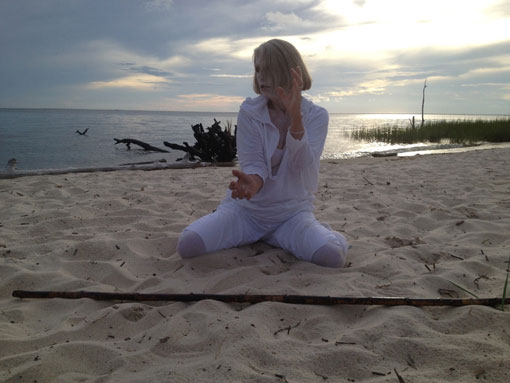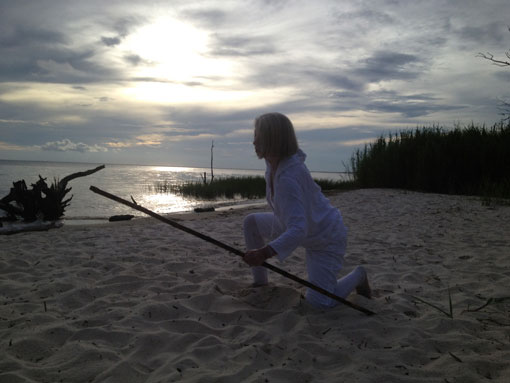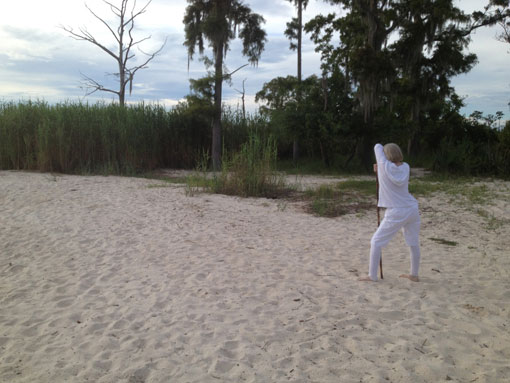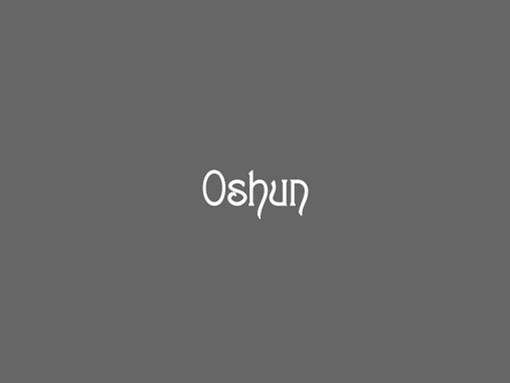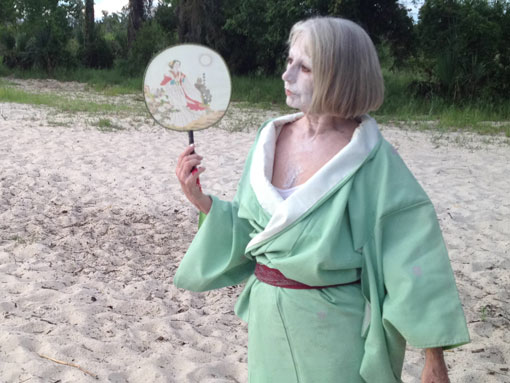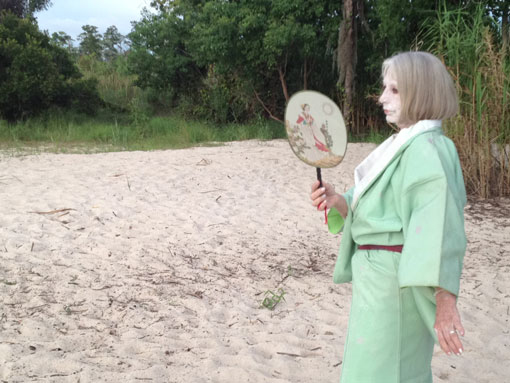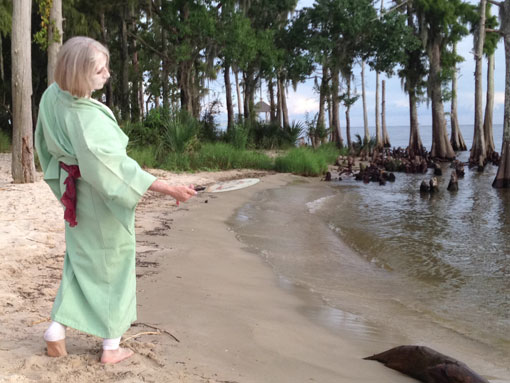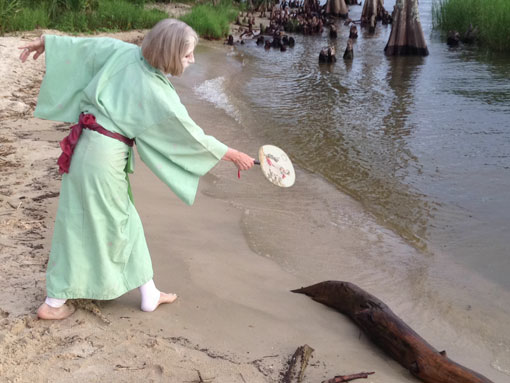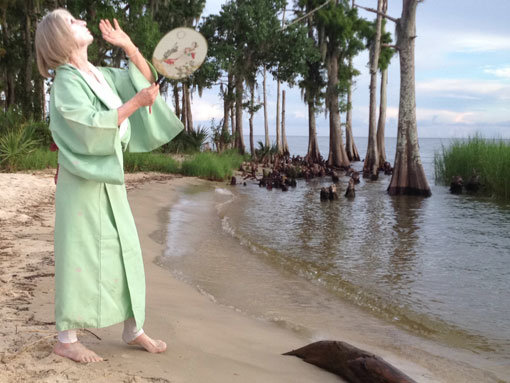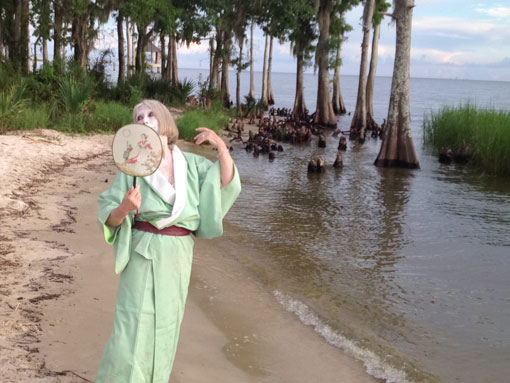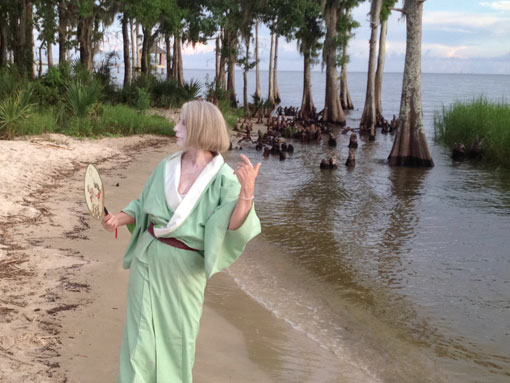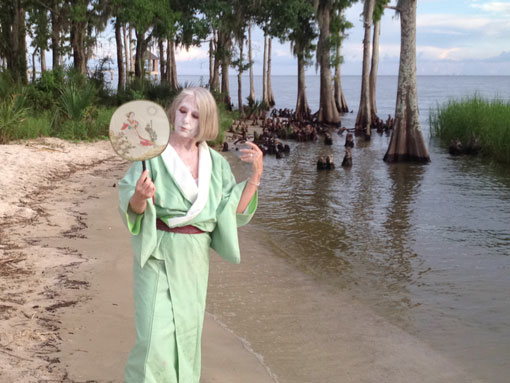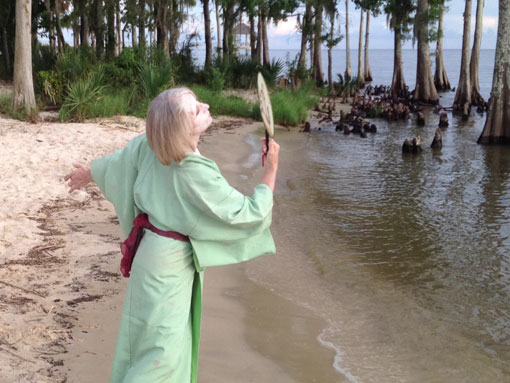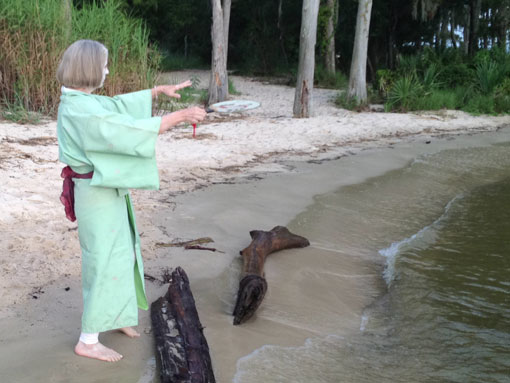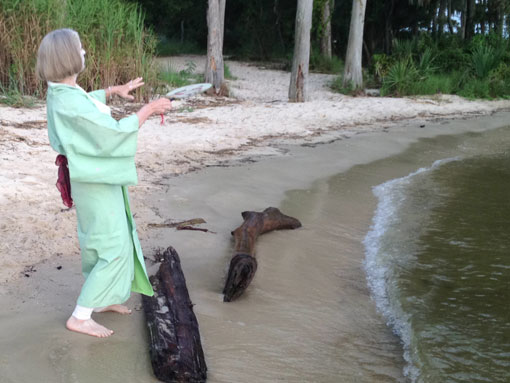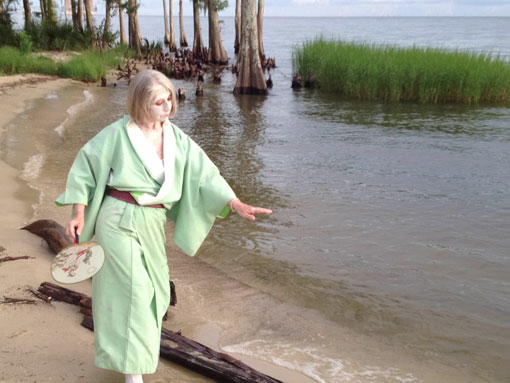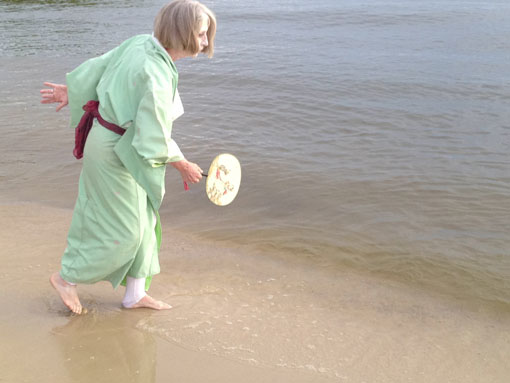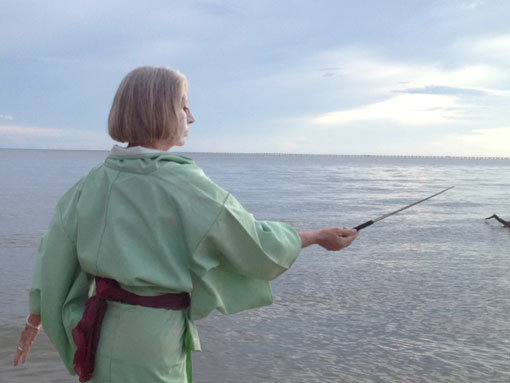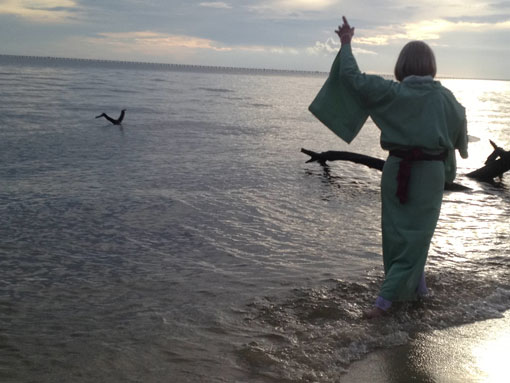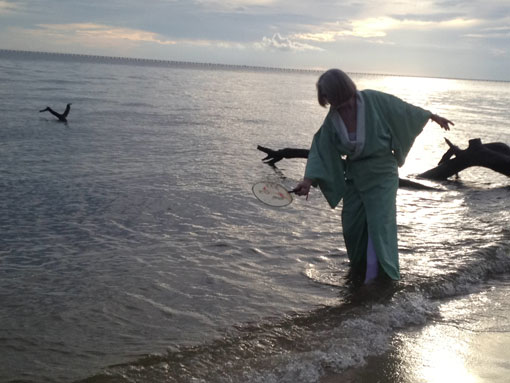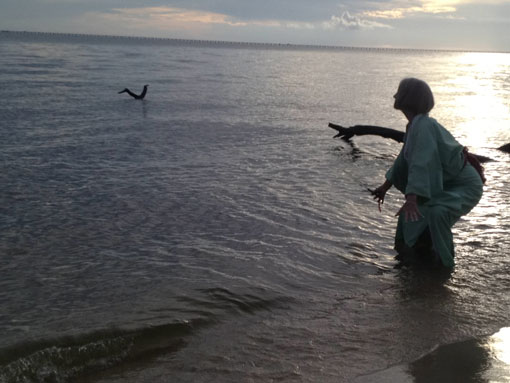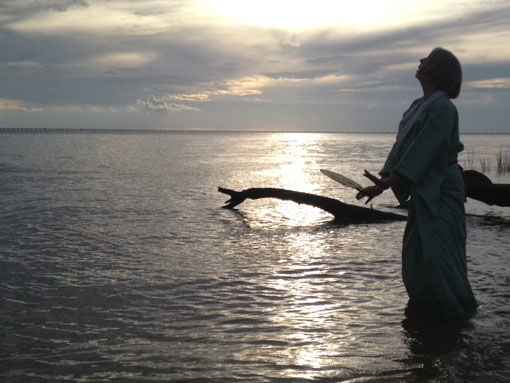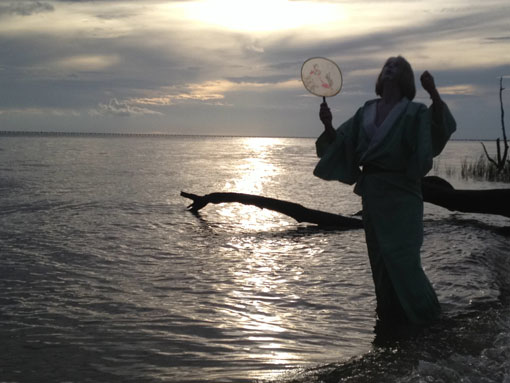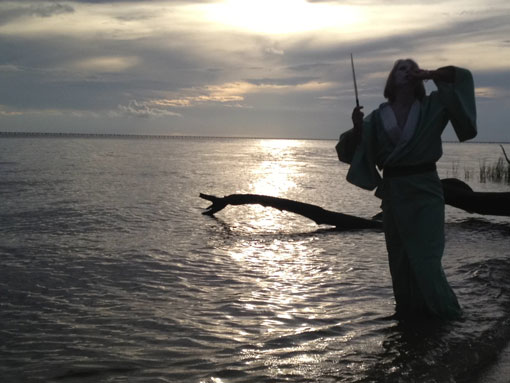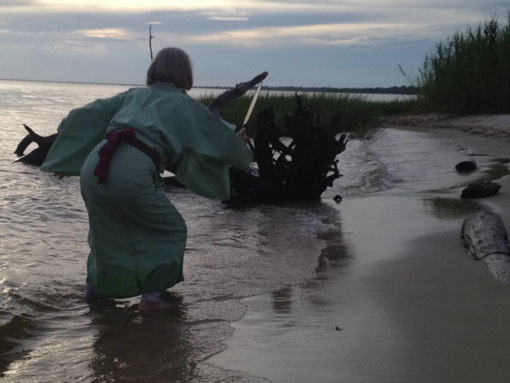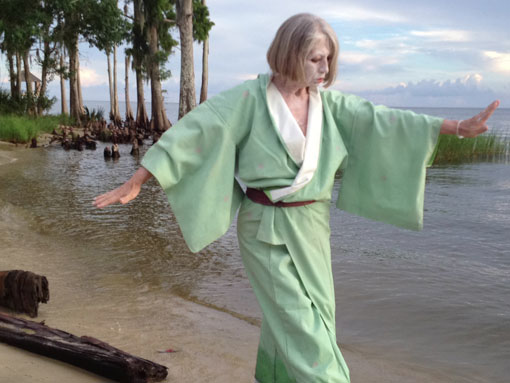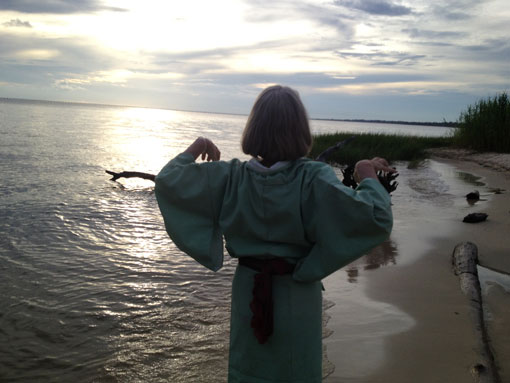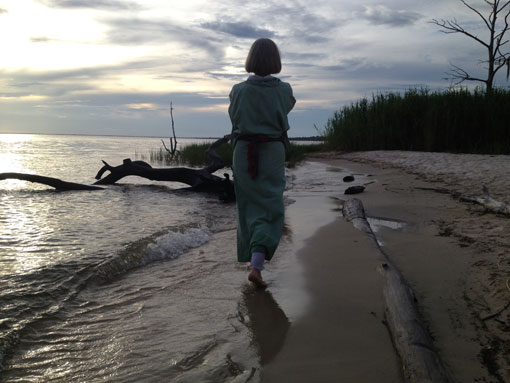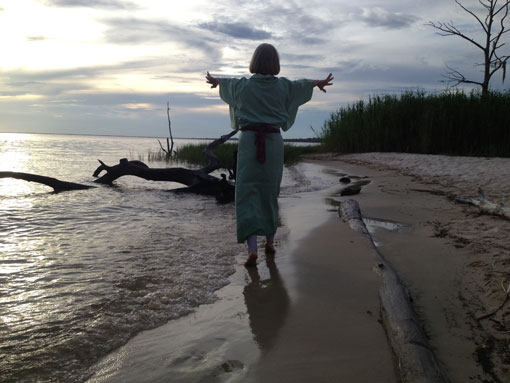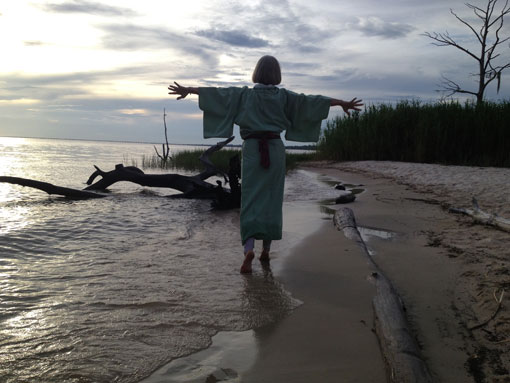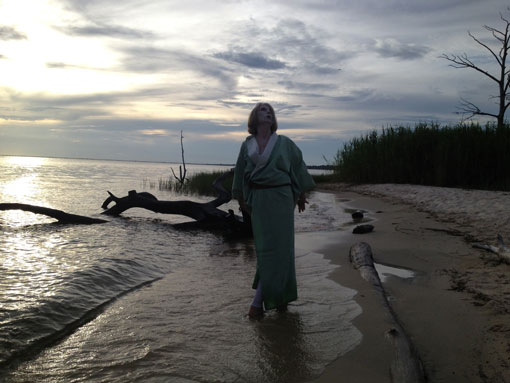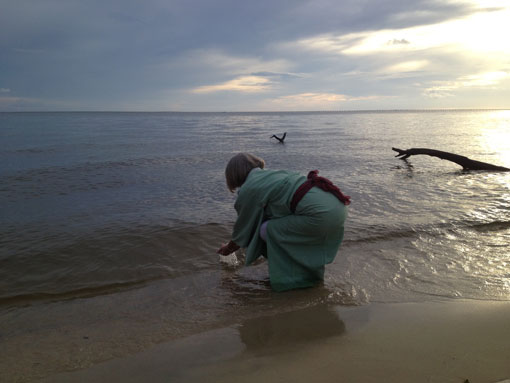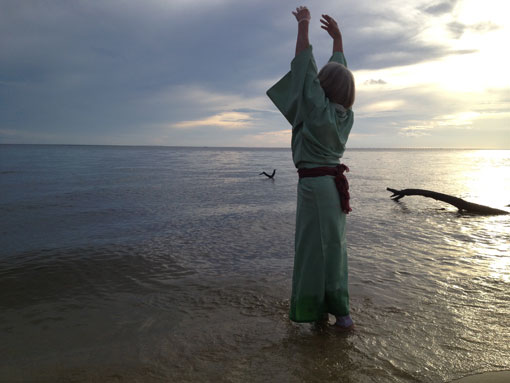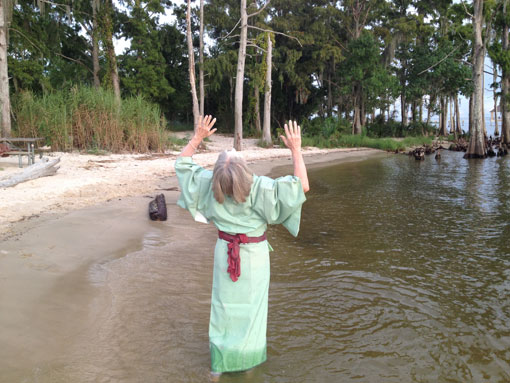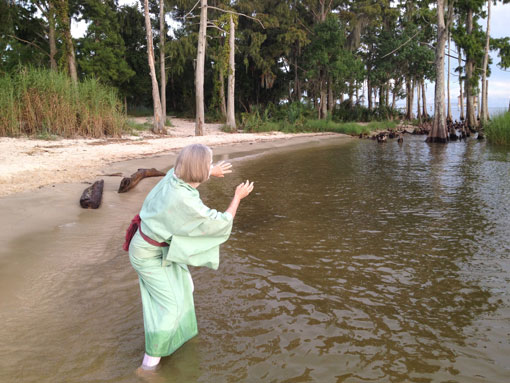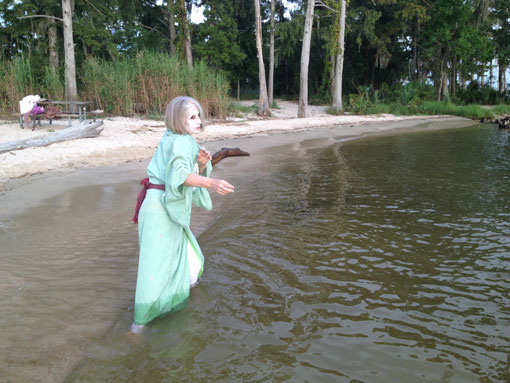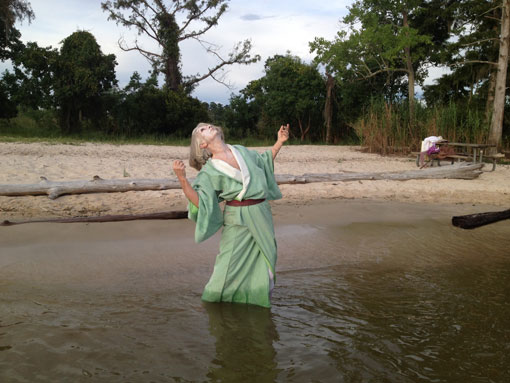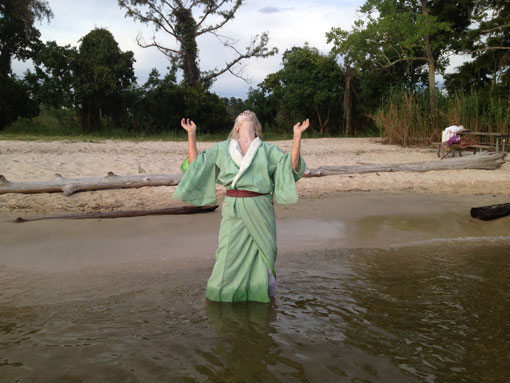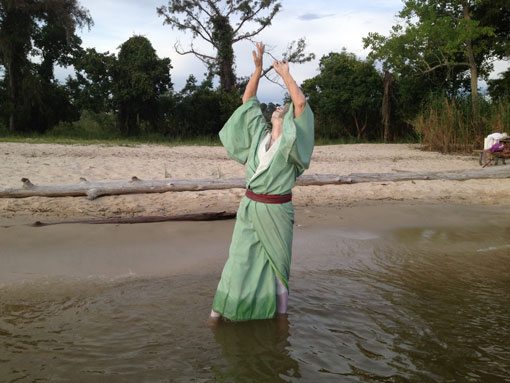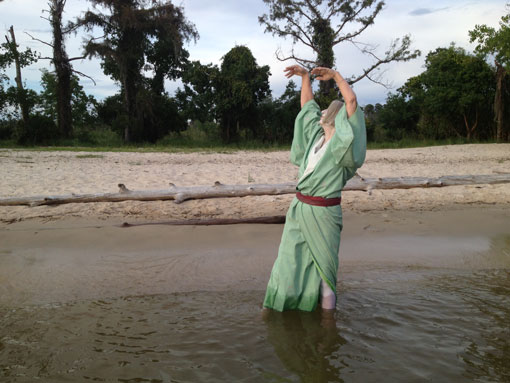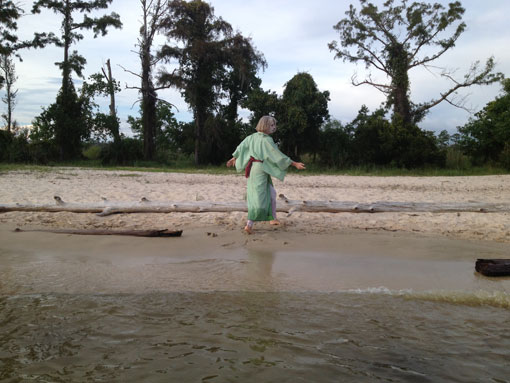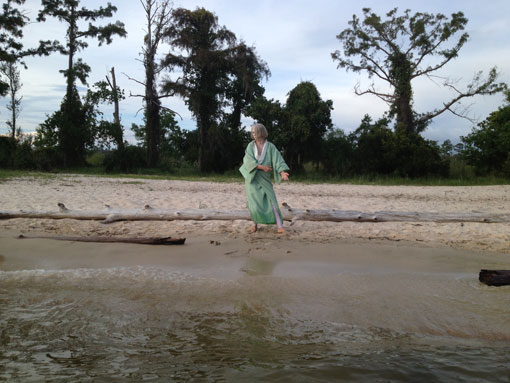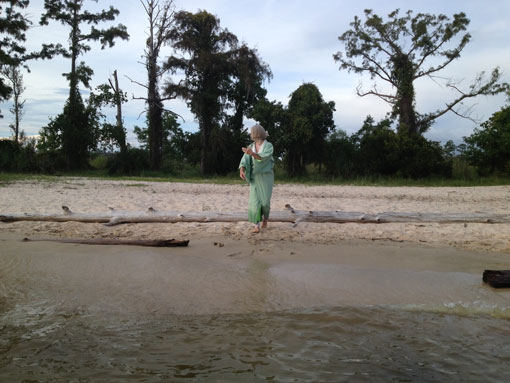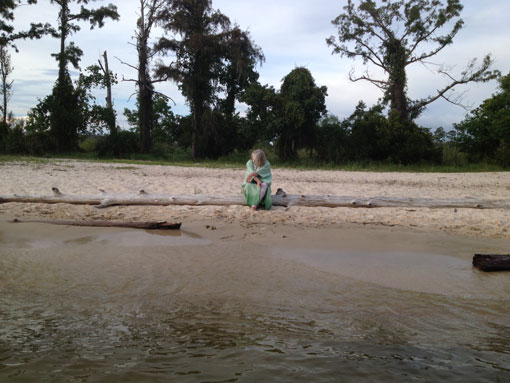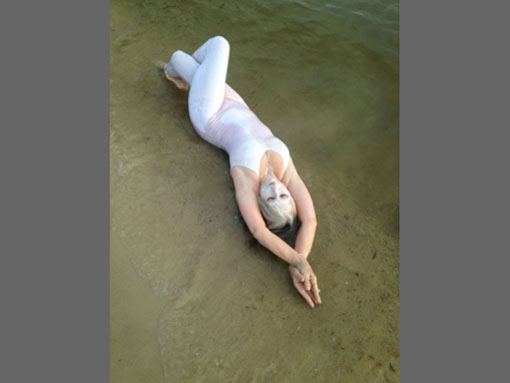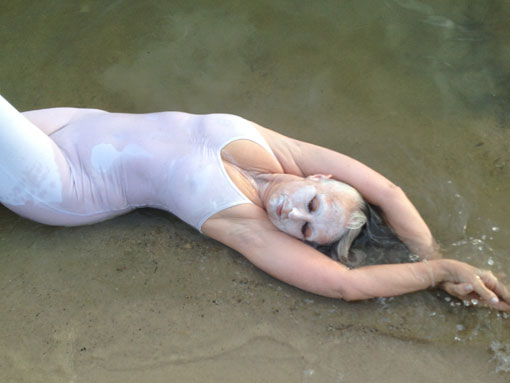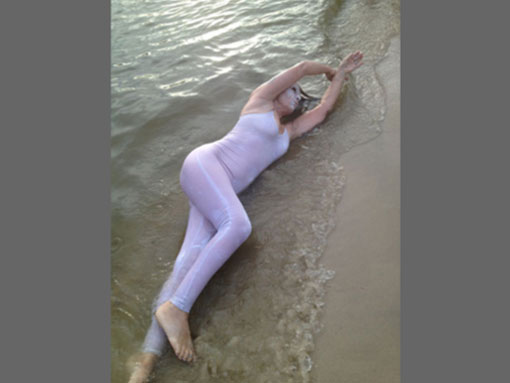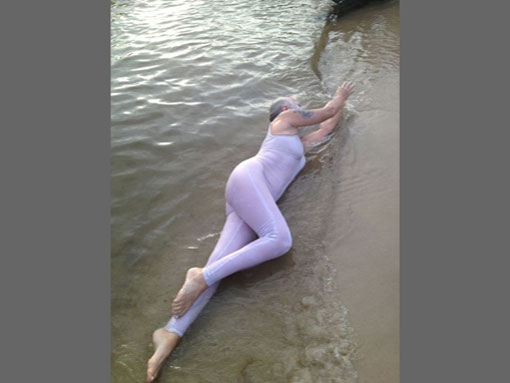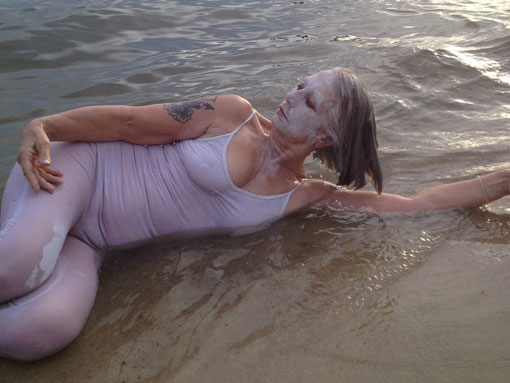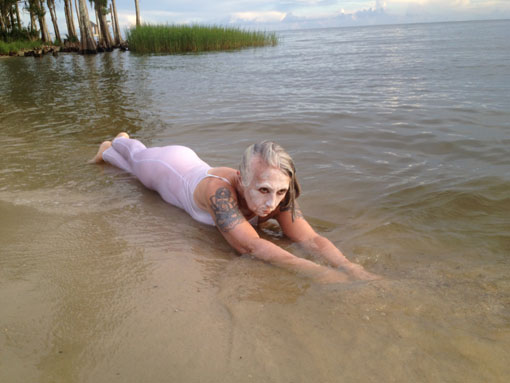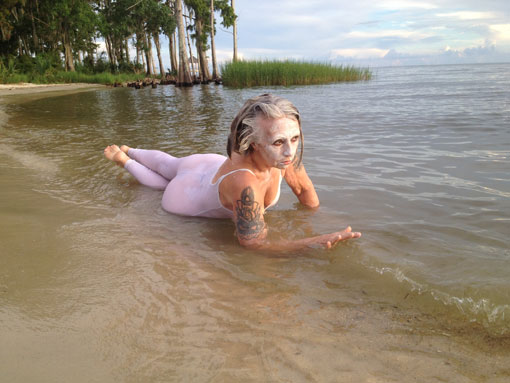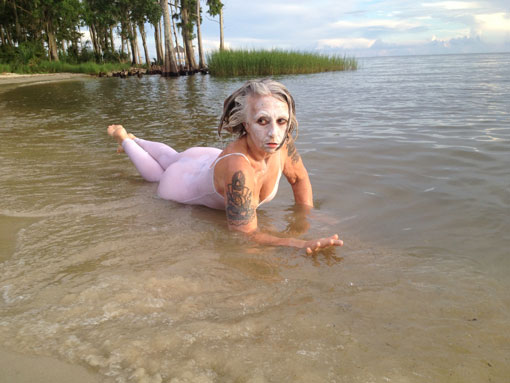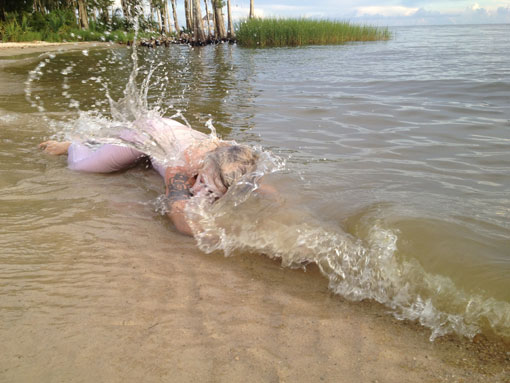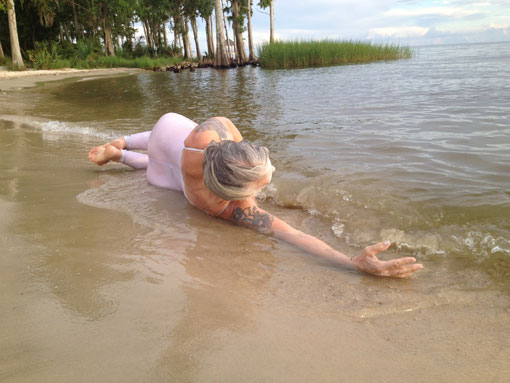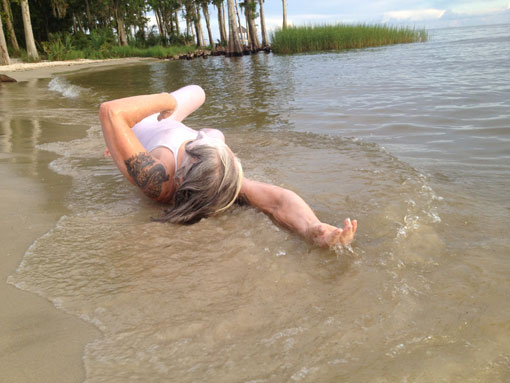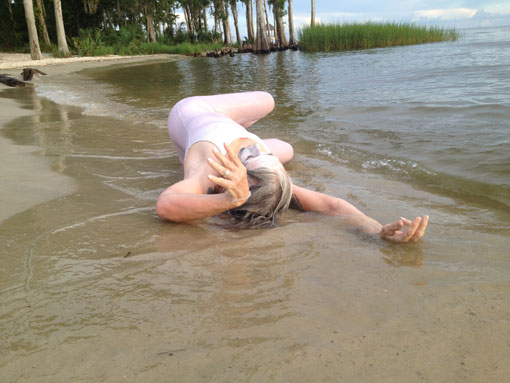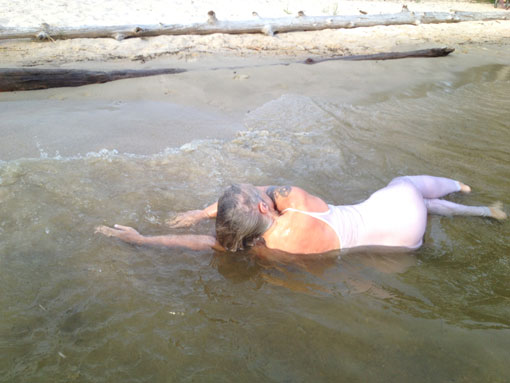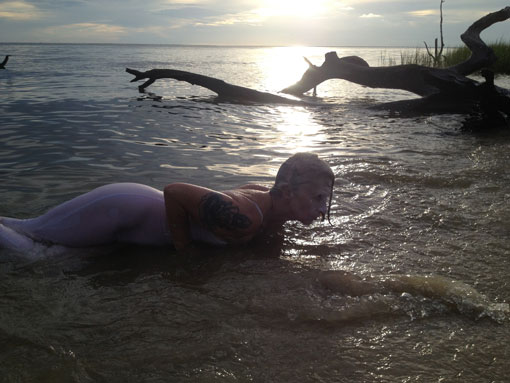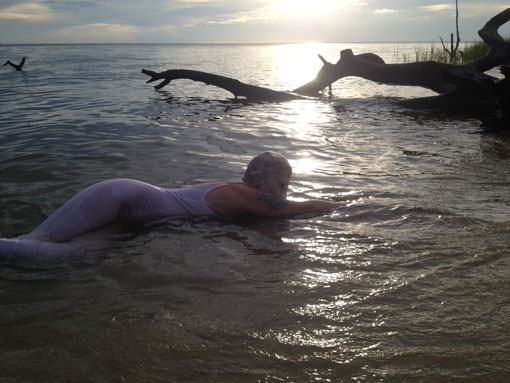- Home
- About
- Paintings
- Photography
- Mixed Media
- Butoh Project
- Contact


WHAT IS BUTOH?
The word Butoh in Japanese means 'dance' or movement. Butoh is a post-modern dance that emerged in Japan in the 1950's in performances by Tatsumi Hijikata and Kazuo Ohno. Butoh's style was both a reaction to the catastrophes of Hiroshima and Nagasaki and a counterpoint to the rapid materialistic post-war reconstruction in Japan. Yet Butoh is always contemporary since its very nature is to project and reflect the concerns of its time.
Hijikata's was a 'Dance of Darkness'. Butoh was unsettling, grotesque. The dance movements were modeled on peasants' stances, emphasizing the hardships of life and the inevitability of death rather than focusing on lines projecting grace and beauty. Butoh was and is the dance between the living and the dead, the dance of the Ancestors, of those who came before and whom we carry within. At times the need for healing prevails and Butoh becomes more a dance of Spirit. By the 1980s Butoh dancers had expanded their work worldwide.
In 1982 I saw the Butoh group Sankai Juku in two performances in Paris and my own choreography was profoundly marked by the experience. Butoh not only opposes the rigidly prescribed forms of classical and modern dancing but it demands a shift of perception in the dancer and by extension the audience. Indeed in Butoh there is no need of an audience. The dancer's body becomes a living breathing sculpture fashioned by the universe it inhabits and reflective of its own inheritance. The dancer's aim is to reflect pure life. That which exists within oneself regardless of the qualities we usually attribute to dance such as beauty, grace, athleticism, youth etc.
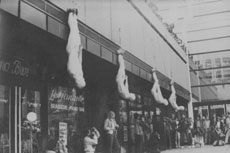
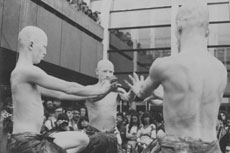
Indeed Butoh can still be viewed as grotesque and/or unconventional but it can also be fluid, gentle, healing. It is almost always provocative but never as its sole aim. It arrests us the way the sudden sight of bleached bones or a butterfly on a flower may do so. Butoh dancers often speak of the original landscape of the body, and of producing the dance which is already inherent within the body.
REFLECTIONS:
Although all of my dancing post 1982 was influenced by Butoh, I later somewhat let go of it focusing on ritual dancing - not all that different. Then one night I was watching the movie Cherry Blossoms and was re-catapulted into the world of MY inner dancing landscape. I began watching the movie again and again, particularly the 2nd half of it (Japan) to really see the girl dancing and pay attention to what she says. Listening to the way she thinks, her vision, her perception. And looked at her costume again. Looking at other performances in Japan and elsewhere I see white bodies and kinono clad bodies as well as naked ones. Well, I think I'm not about to dance naked although I think the original intent was exactly that . After Hiroshima and Nagasaki Butoh was about continuation, living beyond the no-sense of so much horror and surviving the way nature survives. It is both a dance of shadows, of the dead, grotesque looking but also of nature, of life as it is and hope.
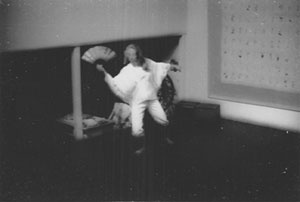
I began to think of Butoh as planetary Reiki. Jiva-Butoh, Karuna-Butoh. (soul dance, compassion dance). A succession of mudra (sacred movements) that are put out there to heal, to effect change. Just like throwing a stone in a pond creates ripples that first are contained in the pond by its borders but then keep traveling into the ether beyond our vision.
I began reading Hijikata: Revolt of the Body - then Yoshito and Kazuo Ohno's book. Ohno seldom performed until he was 47 years old! And he performed internationally when he was 80 till he was 90! Ohno became confined to a wheelchair but his right arm continued to dance. Butoh is not about the body performing a dance but about the dance coming through the body.
I bought a nature sculpture from my friend, done right after the Fukushima disaster. The sculpture is named Iridia. I began looking at her in the darkness of night and then the flashes of storm lightning illuminating the room and I thought, oh, Butoh is the dance of the grotesque and she is sort of grotesque. I mean she's not beautiful in the usual sense, she is grotesque AND beautiful exactly the way a praying mantis is, or a dragonfly or an ... ancestral spirit? And then of course there was the evening when I was looking at Iridia and saw the 3 kimonos I had bought folded right below her. Waiting. And then I looked up again and saw her wings hanging down and saw that they are like kimono sleeves. Reading Kazuo Ohno's World: from without and within I come across his admonitions to his students to see with their feet and their hands ... and then the line: "This characteristic of his dance, whereby the entire body becomes covered with eyes so to speak, as evolved over many years". I am stunned. Glancing along the edges of the world. My sculpture Iridia also is covered with small eyes, garnet eyes, tiger eyes, glass eye.
I practice Butoh as dance of nature, with or without audience. The trees are watching, the earth is watching, the birds, air, clouds. All dances, all breathes, all watches. I dance in my gardens and on the shores of Lake Pontchartrain.
The idea of photography came up. I favored the idea of stills over film because again it's what you catch that is meant to be caught. So I began working with this Butoh for a while. A few months went by. I began to go to the beach by myself to dance ... no audience, nobody ... just earth, sand, sky, earth, sea ... but also I was wanting to dance in my gardens because they are like my navel. The lines that tie us to the universe begin at the navel and those that tie me to the natural world begin in my gardens. I give my Butoh dancing performances on the equinoxes and the solstices.
In nature we are not disturbed by the outside and the contraptions of consumerism and constraints of the robots (society and its masters) and contagion of silliness. Everything becomes ritual, every move is sacred. The trees dance, the flowers dance, the grass itself, the stones, the sand, the clouds and sky. All is dance.
I practiced without music for these dances. Sound is sacred and nature sings as it dances. People's sounds often create drama. Verbal sparring often ends up with quarrels, wars, guns. "He said ... and then she said ... and then he said..and then he pulled a gun". That's always how it happens. Thoughts are things and sounds have vibrations that reverberate throughout infinity. Think of the bombs falling, the rap music, the suped-up engines, the jet engines, the phones ringing. The noise pollution we are creating telling the whole universe we are a horrid grotesque specie. Grotesque is fast becoming one of my favorite words. I prefer to dance to inner rhythms, inner images and other worldly energies. What I do want emerges as Dances of Nature. One butoh dancer did just that; went around the world and danced different pieces, everywhere where there was need for healing.
I began to dream of dance. In a dream I was told "the movement creates its own memory". I woke up and repeated it over and over so I would remember. The movement creates its own memory. I had been practicing and repeating movements and taking notes ... afraid that I might lose a whole dance. At first I thought it meant "don't worry you'll remember the movements, they carry their own memories" and in a way that is true; the movements once done engender a physical memory, if I do not try to think too hard the body itself will know what to do. Then I started to think of a deeper meaning: that the movements carry memories from the infinite past. A cellular memory. Which is course is the whole of Butoh: to bridge the past and the present, the dead and the living, the unknown infinity before us with the moment. Butoh comes from a place in us that is ancestral, that is beyond the limits of time and that the movements bring out through us. Movements coming from a past beyond our birth, from before the beginning creation. From the Dream Time.
I read more of Kazuo Ohno's teachings ... "butoh means to meander between the realms of the living and of the dead" and "consider the human condition from the point of view of the departed".
In Voodoo I am forever reminded that it all begins with the Ancestors. We stand on the shoulders of the Ancestors. The Ancestors are those we knew of course and who have left us, leaving their imprints alive in our hearts but the Ancestors are also the zillions of living entities who have sacrificed so that new life may spring forth, for all is related, all that lives must die and from death life springs forth evermore. We are made of star-stuff, of earth, of air, elements, waters and our souls/spirits are fire-like. So the elements themselves are ancestral to us. When we dance, the ancestral energies remember and emerge anew through us. From the myriad deaths before us emerges the memory of movements. The movements themselves are ancestral, beyond space/time.
The Fukushima earthquake/tsunami/nuclear catastrophe happened shortly after I began this dancing and I immediately saw it involved all four elements. Simultaneously the Butoh project was taking shape: it became allied with some of the Voodoo Spirits. Three then four distinctive parts took form to become as a whole which I called The Marrying Journey of Ochosi and Oshun.
Azaka dances our primordial and eternal battle with the elements. Farmer, blacksmith, fisher, alchemist ... each one in a battle with the element to coax subsistence out of this world. The hope we will win is what gives us the will to continue, to pick up the tools of battle each day after each day, to rise up after each obstacle. The hope of love, of satisfaction, is the nourishment for the will. And the WILL is the essence of the dance of Azaka but all the time death watches the dance. Azaka is the hope of the living in their day to day struggle. Azaka gives himself up towards the future. Azaka is danced in simple white cropped pants and top and with a bamboo rod. Bamboo is used universally for so many tasks: fishing, spears, building, clothing, foodstuff.
M'man Brigitte had come first of course since She is the link to the Ancestral self, then Dani Blanc who coils and uncoils on the beam between the worlds, creating and annihilating. Shiva's own Naga. Working with Azaka in dance I thought these are peasants and laborer's movements - something my body should be quite familiar with. And remember. Dancing near and in water brought out Oshun. She manifested beautifully, naturally. Of course. Maman Brigitte is danced in Her own costume, one that I created out of a vintage wedding dress for a ritual performance. Oshun has Her own kimono and Ochosi appears with Oshun throughout the dance. Dani Blanc strips to the bare body to merge with the flows of the water, the birthing waters of the Earth. Butoh is the dance of giving of oneself. Give up the ego to open yourself up to be a channel of energy, ancestral energy, healing energy, wisdom energy. The allowance of the body to be the vessel is the gift, the offering in the ritual of dance.
The body in motion allows one to be "glancing along the edges". Everything around us is also glancing along the edges.
I read more of Kazuo Ohno's texts - excerpts of talks he gave at his workshops on Butoh. He admonishes us to think of how our mothers give of their own lives to nourish us in utero and then we are born and "it is no small feat to go on devouring ourselves". I am stunned by the choice of words: devouring ourselves. At first I think he means devouring the resources around us but then I realize he means our SPIRIT (soul) enters the mother and she gives of her own blood, life and nourishment so a body can be created as the soul chooses it to be, to shelter this soul/spirit. Then we are born with the soul's chosen body and the soul/spirit literally uses the body, devours the body and its energies until it is all gone. Once the soul/spirit has devoured all that could be had from this specific physical part it must move on. This is such an arresting thought put that way - because in the west we are programmed to think 'body and soul': I have this body and then my soul comes into it and then pff ... one day I will die. But the thinking here is 'soul and body'. The soul demanded that the body be created for itself, a very unique and useful shelter. When the soul had devoured all out of the body, it leaves. I put the book down because I think it's exactly right. When I let my soul dance my body, it is very very light and happy. It devours at its heart's content! I spoke once to my dance teacher of getting old and no longer being able to dance, but he only scoffed and said, "You! You will die dancing". Oh I hope so. For my soul is at its happiest dancing. I would die happy, with my soul devouring the body to the last breath.
The Butoh Project is dedicated to the memory of my friend and teacher Roger Robichaux, dancer extraordinaire and founder of Off-Point Theatre in New Orleans Louisiana (1979-1982). Also Albert Sabi, Bobby Moore, Mickey and all the other artists who left us due to HIV/AIDS.
"Life begins with the first breath and ends with the last breath. Everything in between in dance".
-Roger Robichaux (1948-1990).



